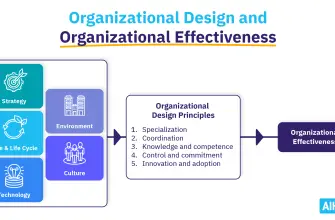“Stay ahead of the game with our comprehensive guide to the UK’s Shortage Occupation List 2023.”
This article provides an insightful guide to predicting the UK’s Shortage Occupation List for 2023. It aims to identify the in-demand job roles and skills that are likely to be included in the list. The shortage occupation list is a crucial tool for employers and job seekers as it identifies the occupations that are in short supply in the UK labor market. This guide will help employers and job seekers to prepare for the future job market and make informed decisions about their career paths.
Top 10 In-Demand Job Roles in the UK for 2023
The UK job market is constantly evolving, and it can be challenging to predict which job roles will be in demand in the future. However, by analyzing current trends and considering factors such as technological advancements and demographic changes, we can make educated predictions about the job roles that will be in high demand in the coming years.
Based on our research, we have compiled a list of the top 10 in-demand job roles in the UK for 2023. These job roles are likely to be included in the UK’s Shortage Occupation List, which is a list of job roles that are in short supply and therefore eligible for skilled worker visas.
1. Data Analysts
Data is becoming increasingly important in all industries, and data analysts are in high demand. They are responsible for collecting, analyzing, and interpreting large amounts of data to help businesses make informed decisions.
2. Cybersecurity Specialists
As technology continues to advance, the need for cybersecurity specialists is growing. They are responsible for protecting businesses from cyber threats and ensuring that sensitive information is kept secure.
3. Healthcare Professionals
The UK’s aging population means that there is a growing demand for healthcare professionals, including doctors, nurses, and care workers. This trend is likely to continue in the coming years.
4. Software Developers
Software developers are responsible for creating and maintaining software applications. As technology continues to advance, the demand for skilled software developers is likely to increase.
5. Engineers
Engineers are responsible for designing and building a wide range of products and structures. They are in high demand in industries such as construction, manufacturing, and aerospace.
6. Digital Marketing Specialists
Digital marketing is becoming increasingly important for businesses of all sizes. Digital marketing specialists are responsible for creating and implementing marketing campaigns across a range of digital channels.
7. Teachers
The UK is facing a shortage of teachers, particularly in subjects such as science, technology, engineering, and mathematics (STEM). This trend is likely to continue in the coming years.
8. Architects
Architects are responsible for designing buildings and structures. They are in high demand in the construction industry, particularly as the UK government invests in infrastructure projects.
9. Renewable Energy Specialists
As the UK moves towards a more sustainable future, the demand for renewable energy specialists is likely to increase. These professionals are responsible for designing and implementing renewable energy systems.
10. Creative Professionals
The UK’s creative industries, including advertising, design, and media, are growing rapidly. Creative professionals, including graphic designers, copywriters, and video editors, are in high demand.
In addition to these job roles, there are certain skills that are likely to be in high demand in the coming years. These include digital skills, such as coding and data analysis, as well as soft skills such as communication, problem-solving, and adaptability.
In conclusion, predicting the UK’s Shortage Occupation List for 2023 is not an exact science, but by analyzing current trends and considering factors such as technological advancements and demographic changes, we can make educated predictions about the job roles that will be in high demand. The top 10 in-demand job roles in the UK for 2023 are likely to include data analysts, cybersecurity specialists, healthcare professionals, software developers, engineers, digital marketing specialists, teachers, architects, renewable energy specialists, and creative professionals.
Predicting the Future of the UK’s Shortage Occupation List
The UK’s Shortage Occupation List (SOL) is a crucial tool for employers and job seekers alike. It identifies job roles that are in high demand but for which there is a shortage of skilled workers in the UK. This list is reviewed regularly, and the government updates it based on the country’s economic needs. The SOL is an essential resource for employers who want to hire skilled workers from outside the UK and for job seekers who want to know which job roles are in demand.
The SOL is divided into two categories: the Shortage Occupation List and the Shortage Occupation List for Scotland. The former includes job roles that are in demand across the UK, while the latter is specific to Scotland. The SOL is reviewed every two years, and the last review was in 2019. The next review is due in 2021, and the updated list will come into effect in 2022. In this article, we will look at the current SOL and predict which job roles are likely to be added or removed in the next review.
The current SOL includes job roles in various sectors, including healthcare, engineering, IT, and education. Some of the job roles on the list include nurses, doctors, software developers, civil engineers, and secondary school teachers. These job roles are in high demand, and there is a shortage of skilled workers in the UK. Employers can hire skilled workers from outside the UK for these job roles without going through the Resident Labour Market Test (RLMT), which is a requirement for most other job roles.
In the next review, we predict that the SOL will include job roles in emerging sectors such as renewable energy, cybersecurity, and artificial intelligence. These sectors are growing rapidly, and there is a shortage of skilled workers in the UK. For example, the UK government has set a target of achieving net-zero carbon emissions by 2050, and this will require a significant investment in renewable energy. Job roles such as wind turbine technicians, solar panel installers, and energy storage engineers are likely to be in high demand in the coming years.
Similarly, the increasing reliance on technology and the rise of cyber threats mean that cybersecurity professionals will be in high demand. Job roles such as cybersecurity analysts, penetration testers, and information security managers are likely to be added to the SOL. Artificial intelligence is another emerging sector that is likely to be in high demand in the coming years. Job roles such as machine learning engineers, data scientists, and AI developers are likely to be added to the SOL.
On the other hand, we predict that some job roles may be removed from the SOL in the next review. For example, the COVID-19 pandemic has had a significant impact on the healthcare sector, and there may be a surplus of healthcare workers in the UK. Job roles such as nurses and doctors may be removed from the SOL, and employers may have to go through the RLMT to hire skilled workers from outside the UK.
In conclusion, the SOL is a crucial tool for employers and job seekers, and it is essential to keep up-to-date with the latest updates. The next review of the SOL is due in 2021, and we predict that job roles in emerging sectors such as renewable energy, cybersecurity, and artificial intelligence will be added to the list. At the same time, some job roles may be removed from the list due to changes in the economic landscape. Employers and job seekers should keep an eye on the SOL to stay ahead of the curve and take advantage of the opportunities it presents.
Skills in Demand: A Guide to the UK’s Shortage Occupation List
The UK’s Shortage Occupation List (SOL) is a list of job roles that are in high demand but have a shortage of skilled workers to fill them. The SOL is reviewed every two years, and the next review is due in 2023. In this article, we will provide an insightful guide to the skills in demand and the job roles that are likely to be included in the 2023 SOL.
The SOL is divided into two categories: the Tier 2 SOL and the Tier 2 (Intra-Company Transfer) SOL. The Tier 2 SOL is for skilled workers who are coming to the UK from outside the European Economic Area (EEA), while the Tier 2 (Intra-Company Transfer) SOL is for skilled workers who are being transferred to the UK by their employer.
One of the job roles that is likely to be included in the 2023 SOL is software developers. The demand for software developers has been increasing rapidly in recent years, and there is a shortage of skilled workers to fill these roles. The SOL is likely to include software developers who have experience in programming languages such as Java, Python, and C++.
Another job role that is likely to be included in the 2023 SOL is nurses. The UK has been facing a shortage of nurses for many years, and this is expected to continue in the coming years. The SOL is likely to include nurses who have experience in areas such as critical care, emergency care, and mental health.
In addition to software developers and nurses, there are several other job roles that are likely to be included in the 2023 SOL. These include:
– Cybersecurity specialists: With the increasing threat of cyber attacks, there is a high demand for cybersecurity specialists who can protect businesses and organizations from these attacks.
– Data analysts: With the increasing amount of data being generated by businesses and organizations, there is a high demand for data analysts who can analyze this data and provide insights to help businesses make informed decisions.
– Engineers: There is a high demand for engineers in various fields, including civil engineering, mechanical engineering, and electrical engineering.
– Teachers: There is a shortage of teachers in many areas, including science, technology, engineering, and mathematics (STEM) subjects.
To be included in the SOL, a job role must meet certain criteria. The job role must be skilled to at least RQF level 6 (equivalent to a bachelor’s degree), and there must be a shortage of skilled workers to fill the role. In addition, the job role must be considered to be of strategic importance to the UK economy.
In conclusion, the 2023 SOL is likely to include job roles in areas such as software development, nursing, cybersecurity, data analysis, engineering, and teaching. These job roles are in high demand and there is a shortage of skilled workers to fill them. If you are considering a career in one of these areas, now is a good time to start developing the skills and experience that will make you a valuable asset to employers. By doing so, you will increase your chances of being included in the 2023 SOL and securing a job in the UK.
Navigating the UK’s Work Permitted Shortage Occupation List
The UK’s Shortage Occupation List (SOL) is a crucial tool for employers and job seekers alike. It identifies job roles that are in high demand and for which there is a shortage of skilled workers in the UK. Employers can use the SOL to recruit skilled workers from outside the UK, while job seekers can use it to identify in-demand job roles and the skills required to secure employment in those roles.
The SOL is reviewed regularly, and the last review was conducted in 2019. The next review is due in 2022, and the updated SOL will come into effect in 2023. In this article, we will provide an insightful guide to predicting the UK’s Shortage Occupation List 2023, including the job roles and skills that are likely to be in high demand.
One of the key factors that influence the SOL is the UK’s economic needs. The COVID-19 pandemic has had a significant impact on the UK’s economy, and it is likely that the SOL will reflect this impact. The pandemic has highlighted the importance of certain job roles, such as healthcare workers, delivery drivers, and supermarket staff. These job roles are likely to remain in high demand, and it is possible that new job roles will be added to the SOL to reflect the changing needs of the UK’s economy.
Another factor that influences the SOL is the UK’s immigration policy. The UK government has introduced a new points-based immigration system, which prioritizes skilled workers. The SOL is an important tool for employers who want to recruit skilled workers from outside the UK, and it is likely that the SOL will be updated to reflect the needs of the new immigration system.
Based on these factors, we can predict some of the job roles and skills that are likely to be in high demand on the UK’s Shortage Occupation List 2023. Healthcare workers, including doctors, nurses, and healthcare assistants, are likely to remain in high demand. The pandemic has highlighted the importance of these job roles, and the UK’s ageing population means that demand for healthcare workers is likely to continue to grow.
Delivery drivers and warehouse operatives are also likely to be in high demand. The pandemic has led to a surge in online shopping, and this trend is likely to continue. As a result, there will be a growing need for delivery drivers and warehouse operatives to ensure that goods are delivered on time.
In addition to these job roles, we can also predict that certain skills will be in high demand. Digital skills, including coding, data analysis, and cybersecurity, are likely to be in high demand. The pandemic has accelerated the shift towards digital technologies, and businesses will need skilled workers who can help them to adapt to this new reality.
Finally, we can predict that language skills will be in high demand. The UK’s new immigration system prioritizes skilled workers, and language skills are an important factor in determining whether a worker is eligible for a visa. As a result, job seekers who have language skills, particularly in languages that are in high demand, such as Mandarin, Spanish, and Arabic, are likely to be in a strong position to secure employment in the UK.
In conclusion, the UK’s Shortage Occupation List is a crucial tool for employers and job seekers alike. The next review of the SOL is due in 2022, and the updated SOL will come into effect in 2023. Based on the UK’s economic needs and immigration policy, we can predict that healthcare workers, delivery drivers, warehouse operatives, digital skills, and language skills will be in high demand on the UK’s Shortage Occupation List 2023. Job seekers who have these skills are likely to be in a strong position to secure employment in the UK.
The Impact of Brexit on the UK’s Shortage Occupation List

The UK’s Shortage Occupation List (SOL) is a crucial tool for employers and job seekers alike. It identifies job roles and skills that are in short supply in the UK labor market, allowing employers to recruit from overseas and enabling skilled workers to secure visas to work in the UK. The SOL is reviewed regularly, and the next update is due in 2023. With Brexit having a significant impact on the UK’s labor market, predicting the future of the SOL is more important than ever.
Brexit has led to a significant reduction in the number of EU workers coming to the UK. This has created a skills gap in many industries, particularly in healthcare, hospitality, and construction. The SOL is likely to reflect this by including more job roles and skills from these sectors. For example, healthcare professionals such as nurses, doctors, and paramedics are likely to remain on the SOL due to the ongoing demand for their skills. Similarly, construction workers such as bricklayers, carpenters, and electricians are also likely to feature on the list.
Another factor that is likely to influence the SOL is the UK’s focus on green energy and sustainability. The government has set ambitious targets for reducing carbon emissions and transitioning to renewable energy sources. This will require a skilled workforce in areas such as engineering, science, and technology. It is therefore likely that job roles and skills related to these areas will be in high demand and feature on the SOL.
The COVID-19 pandemic has also had a significant impact on the UK’s labor market. The healthcare sector has been under immense pressure, and there has been a surge in demand for key workers such as cleaners, delivery drivers, and supermarket staff. While these job roles may not traditionally be considered skilled, they are essential to keeping the country running during a crisis. It is therefore possible that some of these job roles may be added to the SOL in recognition of their importance.
It is worth noting that the SOL is not a fixed list and can change depending on the needs of the UK labor market. The government regularly reviews the list and takes into account factors such as changes in demand, technological advancements, and economic trends. It is therefore important for employers and job seekers to stay up to date with the latest developments and adapt accordingly.
In conclusion, predicting the UK’s Shortage Occupation List for 2023 is a complex task that requires consideration of a range of factors. Brexit, the focus on green energy and sustainability, and the impact of the COVID-19 pandemic are all likely to influence the list. While it is impossible to predict the exact job roles and skills that will feature on the list, it is clear that there will be a continued demand for skilled workers in key sectors such as healthcare, construction, and engineering. Employers and job seekers should stay informed and be prepared to adapt to the changing needs of the UK labor market.
Preparing for the Future: How to Upskill for In-Demand Job Roles
The UK’s Shortage Occupation List (SOL) is a crucial tool for employers and job seekers alike. It identifies job roles that are in high demand but for which there is a shortage of skilled workers in the UK. The SOL is reviewed every two years, and the next review is due in 2023. In this article, we will provide an insightful guide to the in-demand job roles and skills that are likely to feature on the 2023 SOL. We will also offer advice on how to upskill for these roles, so that you can prepare for the future and take advantage of the opportunities that arise.
One of the key trends that is likely to shape the 2023 SOL is the increasing importance of digital skills. The COVID-19 pandemic has accelerated the shift towards remote working and digital technologies, and this trend is likely to continue in the coming years. As a result, job roles that require digital skills are likely to be in high demand. These could include roles such as software developers, data analysts, and cyber security specialists.
Another trend that is likely to shape the 2023 SOL is the ageing population. As the UK population continues to age, there will be an increasing demand for healthcare professionals. This could include roles such as nurses, doctors, and care workers. In addition, there may be a growing demand for professionals who can work with older people in areas such as social care and housing.
The 2023 SOL is also likely to reflect the UK’s commitment to reducing carbon emissions and tackling climate change. This could lead to an increased demand for professionals in areas such as renewable energy, sustainable transport, and environmental management. For example, there may be a growing demand for engineers who can design and build renewable energy infrastructure, or for professionals who can help businesses to reduce their carbon footprint.
So, how can you upskill for these in-demand job roles? One option is to pursue further education or training in a relevant field. For example, if you are interested in a career in software development, you could consider studying computer science or software engineering at university. Alternatively, you could take a coding bootcamp or online course to develop your skills.
Another option is to gain practical experience through internships or work placements. This can be a great way to learn on the job and gain valuable experience that will make you more attractive to employers. You could also consider volunteering or taking on freelance work to build up your portfolio and demonstrate your skills.
Networking is also an important part of upskilling for in-demand job roles. Attending industry events, joining professional associations, and connecting with people on LinkedIn can all help you to build a network of contacts who can offer advice, support, and job opportunities.
In conclusion, the 2023 SOL is likely to reflect the UK’s changing economy and society, with a focus on digital skills, healthcare, and sustainability. By upskilling for these in-demand job roles, you can prepare for the future and take advantage of the opportunities that arise. Whether you choose to pursue further education, gain practical experience, or build your network, there are many ways to develop the skills and knowledge you need to succeed in the jobs of tomorrow.
The Role of Technology in the UK’s Shortage Occupation List
The UK’s Shortage Occupation List (SOL) is a crucial tool for employers and job seekers alike. It identifies job roles and skills that are in high demand but are not being filled by the domestic workforce. The SOL is reviewed every two years, and the next review is due in 2023. In this article, we will explore the role of technology in shaping the UK’s SOL and predict which job roles and skills are likely to be in demand in 2023.
Technology has been a driving force behind many of the changes in the UK’s labour market in recent years. The rise of automation, artificial intelligence, and other digital technologies has led to the creation of new job roles and the transformation of existing ones. As a result, the UK’s SOL has been updated to reflect these changes.
One of the most significant impacts of technology on the UK’s SOL has been the increased demand for workers with digital skills. The SOL already includes several job roles related to technology, such as software developers, IT business analysts, and cyber security specialists. However, as technology continues to evolve, we can expect to see new job roles emerge that require even more advanced digital skills.
For example, we can expect to see an increased demand for workers with expertise in emerging technologies such as blockchain, the Internet of Things (IoT), and machine learning. These technologies are already being used in a variety of industries, from finance to healthcare, and are likely to become even more prevalent in the coming years. As a result, job roles such as blockchain developers, IoT specialists, and machine learning engineers are likely to be in high demand in 2023.
Another way that technology is shaping the UK’s SOL is through the automation of certain job roles. Automation has already led to the elimination of some jobs, such as bank tellers and factory workers. However, it has also created new job roles, such as automation engineers and robotics technicians. These job roles require a different set of skills than the jobs they are replacing, and as a result, we can expect to see an increased demand for workers with these skills in the coming years.
In addition to creating new job roles, technology is also changing the nature of existing job roles. For example, the rise of e-commerce has led to a shift in the retail industry, with more and more consumers choosing to shop online rather than in-store. As a result, we can expect to see an increased demand for workers with skills related to e-commerce, such as digital marketing and web development.
Finally, technology is also having an impact on the UK’s SOL by increasing the demand for workers with soft skills. Soft skills, such as communication, problem-solving, and teamwork, are becoming increasingly important in the digital age. As technology continues to automate certain job roles, workers with strong soft skills will be in high demand to fill the roles that cannot be automated.
In conclusion, technology is playing a significant role in shaping the UK’s SOL. We can expect to see an increased demand for workers with digital skills, as well as workers with expertise in emerging technologies such as blockchain, IoT, and machine learning. Automation is also creating new job roles that require a different set of skills, and technology is changing the nature of existing job roles. Finally, the importance of soft skills is increasing in the digital age, and workers with strong soft skills will be in high demand. By understanding these trends, job seekers can position themselves for success in the coming years.
The Importance of Diversity in the UK’s Shortage Occupation List
The UK’s Shortage Occupation List (SOL) is a crucial tool for employers and job seekers alike. It identifies job roles that are in high demand but for which there is a shortage of skilled workers in the UK. This list is reviewed every two years, and the next review is due in 2023. In this article, we will explore the importance of diversity in the UK’s SOL and provide insights into the job roles and skills that are likely to be in demand in the coming years.
Diversity is a critical factor in the UK’s SOL. The list is designed to ensure that the UK’s economy has access to the skills and expertise it needs to thrive. However, it is also essential that the list reflects the diversity of the UK’s population. This means that the SOL should include job roles that are in demand across a range of industries and sectors, and that are accessible to people from a variety of backgrounds.
One area where diversity is particularly important is in the STEM (Science, Technology, Engineering, and Mathematics) fields. These fields are critical to the UK’s economy, but they are also traditionally male-dominated. To ensure that the UK’s SOL is diverse, it is essential that it includes job roles in STEM fields that are accessible to women and people from other underrepresented groups.
Another area where diversity is crucial is in the creative industries. These industries are essential to the UK’s economy, but they are also highly competitive. To ensure that the UK’s SOL is diverse, it is essential that it includes job roles in the creative industries that are accessible to people from a range of backgrounds.
So, what job roles and skills are likely to be in demand in the coming years? One area that is likely to see continued growth is healthcare. The COVID-19 pandemic has highlighted the importance of healthcare workers, and there is likely to be a continued demand for skilled healthcare professionals in the coming years. This includes not only doctors and nurses but also allied health professionals such as physiotherapists and occupational therapists.
Another area that is likely to see growth is the tech industry. The pandemic has accelerated the shift towards remote working and digital technologies, and this trend is likely to continue. This means that there will be a continued demand for skilled tech professionals, including software developers, data analysts, and cybersecurity experts.
Finally, the creative industries are also likely to see continued growth. The UK is home to some of the world’s most talented artists, designers, and musicians, and there is likely to be a continued demand for their skills and expertise. This includes not only traditional creative roles but also roles in emerging fields such as virtual reality and augmented reality.
In conclusion, the UK’s SOL is a critical tool for ensuring that the UK’s economy has access to the skills and expertise it needs to thrive. However, it is also essential that the list reflects the diversity of the UK’s population. This means that the SOL should include job roles that are in demand across a range of industries and sectors, and that are accessible to people from a variety of backgrounds. Looking ahead to 2023, it is likely that job roles in healthcare, tech, and the creative industries will be in high demand. By ensuring that the UK’s SOL is diverse and inclusive, we can ensure that everyone has the opportunity to contribute to the UK’s economic success.
The Benefits and Challenges of Working in a Shortage Occupation
The UK’s Shortage Occupation List (SOL) is a list of job roles that are in high demand but have a shortage of skilled workers to fill them. The SOL is reviewed every two years, and the next review is due in 2023. This article will provide an insightful guide to in-demand job roles and skills that are likely to be included in the 2023 SOL.
Working in a shortage occupation can be highly beneficial for both the worker and the employer. For the worker, it can mean job security, higher wages, and opportunities for career progression. For the employer, it can mean access to a pool of skilled workers who are in short supply, which can help to improve productivity and competitiveness.
However, working in a shortage occupation can also present challenges. For example, workers may need to relocate to a different part of the country, or even a different country altogether, in order to find work. They may also need to undergo additional training or qualifications in order to meet the requirements of the job.
One of the most in-demand job roles in the UK is nursing. The UK has been experiencing a shortage of nurses for several years, and this is expected to continue in the coming years. Nurses are in high demand across all areas of healthcare, including hospitals, care homes, and community settings. In order to work as a nurse in the UK, workers must be registered with the Nursing and Midwifery Council (NMC), which requires a degree-level qualification.
Another in-demand job role is software development. With the increasing reliance on technology in all areas of life, there is a growing need for skilled software developers who can design and build software applications. This is particularly true in the financial and technology sectors, where there is a high demand for developers with expertise in areas such as artificial intelligence and blockchain technology.
Engineering is another area where there is a shortage of skilled workers. This includes both traditional engineering roles, such as mechanical and electrical engineering, as well as newer areas such as renewable energy and environmental engineering. In order to work as an engineer in the UK, workers must be registered with the Engineering Council, which requires a degree-level qualification.
Other in-demand job roles that are likely to be included in the 2023 SOL include healthcare professionals such as physiotherapists and occupational therapists, as well as skilled tradespeople such as electricians and plumbers.
In order to work in a shortage occupation, workers may need to undergo additional training or qualifications. This can be a challenge, particularly for those who are already in employment or who have family commitments. However, there are a range of options available, including part-time and distance learning courses, as well as apprenticeships and on-the-job training.
In conclusion, working in a shortage occupation can be highly beneficial for both workers and employers. However, it can also present challenges, such as the need for additional training or relocation. The 2023 SOL is likely to include a range of in-demand job roles, including nursing, software development, and engineering. Workers who are interested in these areas should consider the training and qualifications required, and explore the range of options available to them.
The Future of Work: Trends and Predictions for the UK’s Shortage Occupation List
The UK’s Shortage Occupation List (SOL) is a crucial tool for employers and job seekers alike. It identifies job roles and skills that are in high demand but are not being filled by the domestic workforce. The SOL is reviewed every two years, and the next review is due in 2023. In this article, we will explore the trends and predictions for the UK’s SOL in 2023.
One of the most significant trends in the UK’s labour market is the ageing population. As the baby boomer generation retires, there will be a significant increase in demand for healthcare professionals. The SOL is likely to reflect this trend, with an increased demand for nurses, doctors, and other healthcare professionals.
Another trend that is likely to shape the SOL in 2023 is the rise of automation and artificial intelligence. As more jobs become automated, there will be a greater demand for workers with skills that cannot be easily replicated by machines. This includes roles in creative industries, such as graphic design and marketing, as well as jobs that require emotional intelligence, such as social work and counselling.
The COVID-19 pandemic has also had a significant impact on the UK’s labour market. The pandemic has highlighted the importance of certain job roles, such as healthcare professionals and delivery drivers. It has also accelerated the shift towards remote working, which is likely to continue even after the pandemic has ended. As a result, there may be an increased demand for IT professionals who can support remote working and cybersecurity.
Brexit is another factor that is likely to shape the SOL in 2023. The UK’s departure from the EU has led to a significant reduction in the number of EU workers in the UK. This has created a skills gap in certain industries, such as hospitality and agriculture. The SOL may reflect this trend, with an increased demand for workers in these industries.
In addition to these trends, there are certain job roles and skills that are likely to remain in high demand. These include roles in STEM (science, technology, engineering, and maths) industries, such as software development and engineering. There is also likely to be a continued demand for skilled tradespeople, such as electricians and plumbers.
So, what does all of this mean for job seekers and employers? For job seekers, it is important to keep an eye on the trends and predictions for the SOL. This can help you to identify job roles and skills that are likely to be in high demand in the future. It may also be worth considering retraining or upskilling in order to meet the changing demands of the labour market.
For employers, the SOL can be a valuable tool for identifying skills shortages and recruiting workers from overseas. However, it is important to remember that the SOL is not a substitute for investing in the domestic workforce. Employers should also consider investing in training and development programmes to upskill their existing workforce.
In conclusion, the UK’s SOL is likely to reflect the trends and predictions for the labour market in 2023. This includes an increased demand for healthcare professionals, workers with skills that cannot be easily replicated by machines, and IT professionals who can support remote working and cybersecurity. Brexit and the ageing population are also likely to shape the SOL, with an increased demand for workers in certain industries. Job seekers and employers should keep an eye on these trends and predictions in order to stay ahead of the curve.
Q&A
1. What is the UK’s Shortage Occupation List?
– The UK’s Shortage Occupation List is a list of job roles that are in high demand and for which there is a shortage of skilled workers in the country.
2. Who creates the Shortage Occupation List?
– The Shortage Occupation List is created by the UK government’s Migration Advisory Committee (MAC).
3. How often is the Shortage Occupation List updated?
– The Shortage Occupation List is updated every year.
4. What is the purpose of the Shortage Occupation List?
– The purpose of the Shortage Occupation List is to identify job roles that are in high demand and for which there is a shortage of skilled workers in the UK, so that employers can recruit skilled workers from outside the UK to fill these roles.
5. What are the benefits of being on the Shortage Occupation List?
– Being on the Shortage Occupation List means that employers can recruit skilled workers from outside the UK to fill these roles, which can help to address skills shortages and support economic growth.
6. What are the criteria for a job role to be included on the Shortage Occupation List?
– The criteria for a job role to be included on the Shortage Occupation List include evidence of a shortage of skilled workers in the UK, evidence that the role is skilled and requires a specific level of qualification or experience, and evidence that the role is essential to the UK economy.
7. What are some examples of job roles that are currently on the Shortage Occupation List?
– Some examples of job roles that are currently on the Shortage Occupation List include nurses, doctors, engineers, IT professionals, and chefs.
8. How can employers recruit skilled workers from outside the UK to fill roles on the Shortage Occupation List?
– Employers can recruit skilled workers from outside the UK to fill roles on the Shortage Occupation List by sponsoring them for a Tier 2 visa.
9. What is the process for a job role to be added to the Shortage Occupation List?
– The process for a job role to be added to the Shortage Occupation List involves a review by the MAC, which considers evidence of a shortage of skilled workers in the UK, evidence that the role is skilled and requires a specific level of qualification or experience, and evidence that the role is essential to the UK economy.
10. When will the Shortage Occupation List for 2023 be published?
– The Shortage Occupation List for 2023 is expected to be published in the autumn of 2022.








